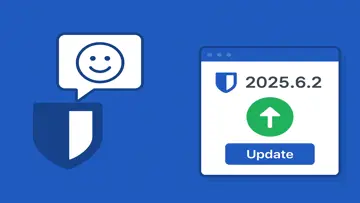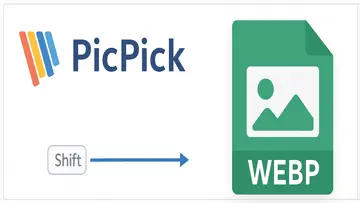Streamline File Access with Windows Server Access-based Enumeration
Windows Server Access-based Enumeration enhances security by ensuring users only see files and folders they have permission to view, simplifying navigation and preventing unauthorized access.
Access-based Enumeration is a feature in the Windows Server operating system that allows administrators to control which files and folders are visible to users based on their permissions. This can be useful in large organizations with complex file structures and multiple user groups, as it helps prevent confusion and unauthorized access to sensitive information.
With Access-based Enumeration, users can only see files and folders that they have the appropriate permissions to access. This means that if a user does not have permission to view a certain directory, it will not appear in their file explorer. This feature can also improve performance on file servers by reducing the number of objects the system needs to enumerate when serving requests.
Access-based Enumeration is available on Windows Server 2003 with SP1 or later versions. To enable it, administrators need to install the File Server Resource Manager (FSRM) role service and enable the Access-based Enumeration option.
Access-based Enumeration is a valuable tool for organizations that need to secure their file systems and provide users with a more streamlined and intuitive view of their data. It offers a simple yet effective way to ensure that only authorized users can access sensitive files and folders, while also improving system performance.
Overview
Windows Server Access-based Enumeration is a Commercial software in the category Security developed by Microsoft.
The latest version of Windows Server Access-based Enumeration is 1.0.0, released on 02/18/2008. It was initially added to our database on 10/29/2007.
Windows Server Access-based Enumeration runs on the following operating systems: Windows.
Windows Server Access-based Enumeration has not been rated by our users yet.
Pros
- Improves security by only showing users the files and folders they have permission to access
- Eases navigation and reduces clutter for users by hiding files and folders they cannot access
- Helps prevent accidental deletion or modification of sensitive files and folders
- Can be easily configured through Windows Server Management tools
Cons
- Requires Windows Server operating system to implement
- May slightly impact server performance due to additional processing required to enforce access-based enumeration
- Users may experience slower file searches when accessing large directories with complex permissions
FAQ
What is Windows Server Access-based Enumeration (ABE)?
ABE is a feature in Windows Server that allows users to see and access only the files and folders for which they have permission, while hiding those they don't.
How does Access-based Enumeration work?
ABE works by intercepting and filtering file system requests at the server level. It leverages the user's permissions to determine what files and folders are visible and accessible.
What are the benefits of using Access-based Enumeration?
ABE helps improve security by reducing the risk of unauthorized access to sensitive files and folders. It also simplifies file navigation for users by hiding irrelevant or inaccessible content.
Which versions of Windows Server support Access-based Enumeration?
ABE is available on Windows Server 2003, Windows Server 2008, Windows Server 2008 R2, Windows Server 2012, Windows Server 2012 R2, and later versions.
Is Access-based Enumeration enabled by default?
No, ABE is not enabled by default. Administrators need to manually enable it at the file share level using either the GUI or command-line tools.
Can Access-based Enumeration be applied to existing file shares?
Yes, ABE can be applied to existing file shares. However, enabling it might have an impact on performance, so it's recommended to test it in a controlled environment before applying it to production shares.
Can Access-based Enumeration be selectively applied to specific folders within a share?
No, ABE is applied at the file share level and affects all folders and files within that share. It cannot be selectively enabled or disabled for specific folders.
Are there any limitations or considerations when using Access-based Enumeration?
Yes, there are a few considerations to keep in mind, such as potential performance impact, compatibility with older clients, and the need for proper folder and file permissions in order for ABE to work correctly.
Can Access-based Enumeration be combined with other permission-based technologies?
Yes, ABE can be used alongside other permission-based technologies like Access Control Lists (ACLs) and Active Directory to further enhance access control and file visibility.
Can Access-based Enumeration be managed remotely?
Yes, ABE can be managed remotely using tools like Windows PowerShell or the Shared Folders snap-in for MMC (Microsoft Management Console).

David Fischer
I am a technology writer for UpdateStar, covering software, security, and privacy as well as research and innovation in information security. I worked as an editor for German computer magazines for more than a decade before joining the UpdateStar team. With over a decade of editorial experience in the tech industry, I bring a wealth of knowledge and expertise to my current role at UpdateStar. At UpdateStar, I focus on the critical areas of software, security, and privacy, ensuring our readers stay informed about the latest developments and best practices.
Latest Reviews by David Fischer
Latest Reviews
|
|
Samsung Easy Printer Manager
Effortlessly manage your Samsung printer with Samsung Easy Printer Manager. |
|
|
Microsoft System CLR Types per SQL Server 2016
Essential Component for SQL Server 2016 Functionality |
|
|
FlexiServer Productivity and Attendance Software
Boost Your Team's Productivity with FlexiServer |
|
WebSignClient
Secure Your Documents with WebSignClient |
|
|
|
Kodi
Unleash the full potential of your media with Kodi |
|
|
Yoosee
Yoosee: Seamless Remote Surveillance on the Go |
|
|
UpdateStar Premium Edition
Keeping Your Software Updated Has Never Been Easier with UpdateStar Premium Edition! |
|
|
Microsoft Edge
A New Standard in Web Browsing |
|
|
Microsoft Visual C++ 2015 Redistributable Package
Boost your system performance with Microsoft Visual C++ 2015 Redistributable Package! |
|
|
Google Chrome
Fast and Versatile Web Browser |
|
|
Microsoft Visual C++ 2010 Redistributable
Essential Component for Running Visual C++ Applications |
|
|
Microsoft Update Health Tools
Microsoft Update Health Tools: Ensure Your System is Always Up-to-Date! |





